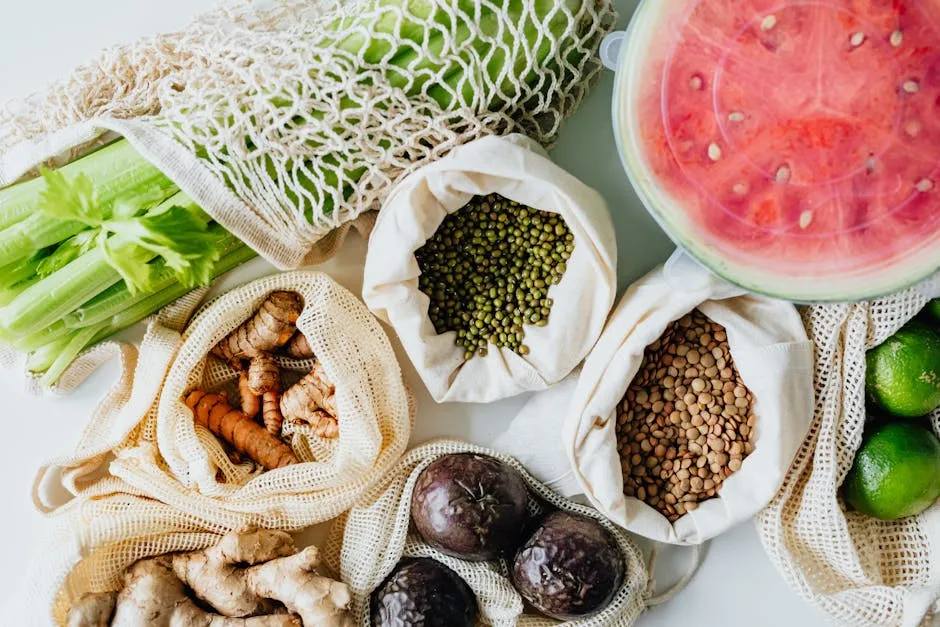Introduction
In the world of canine cuisine, few things are as refreshing as a juicy slice of cantaloupe on a hot summer day. But wait—before you toss some melon to your furry friend, you might be asking yourself, “Can dogs eat cantaloupe?” Well, the answer is a resounding yes! However, like all good things, moderation is key. This article will explore the ins and outs of feeding cantaloupe to your dog, including its benefits, potential risks, and the best ways to prepare it for your pup.
Cantaloupe is not just a summer favorite for humans but also a nutritious treat for dogs when given in moderation. This fruit is packed with water, vitamins A and C, dietary fiber, and antioxidants. These nutrients can offer hydration and support for your dog’s immune system. But hold your horses! While cantaloupe can be a tasty addition to your dog’s diet, it’s essential to be aware of how much you’re serving and how to prepare it properly.
Now, let’s get to the juicy part! How do you serve cantaloupe to your canine companion without any hiccups? This article will cover everything you need to know. So grab a slice for yourself and read on to discover how this sweet fruit can be a delightful treat for your furry friend!

Summary of Key Points
Cantaloupe is a fantastic summer snack for both humans and dogs when offered in moderation. Here are the essential aspects of feeding cantaloupe to dogs:
- Nutritional Benefits: Cantaloupe is packed with water, providing hydration, and is loaded with vitamins A and C, which support your dog’s immune system.
- Moderation Matters: While this fruit is low in calories, its high sugar content means it should only make up a small portion of your dog’s diet.
- Preparation Guidelines: Always remove the rind and seeds, as these can pose choking hazards and gastrointestinal issues.
- Potential Risks: Allergies and digestive sensitivities are possible, so it’s crucial to monitor your dog for any adverse reactions.
- Other Safe Fruits: Cantaloupe pairs well with other fruits, such as watermelon and blueberries, that are safe for dogs, giving pet owners more options for healthy treats.
This summary will spark curiosity about the details that will follow in the main sections.
Can Dogs Eat Cantaloupe? The Basics
Is Cantaloupe Safe for Dogs?
Absolutely! Cantaloupe is a safe, non-toxic treat for dogs. This refreshing fruit is packed with nutrients and can be a healthy addition to your pup’s diet. Many veterinarians recommend cantaloupe as an occasional snack. Just remember, moderation is key! Too much can lead to digestive issues, so a few small pieces will do.
Cantaloupe is not only safe but also offers a delightful taste that most dogs find irresistible. While it’s a healthy treat, always keep an eye on portion sizes. Each pup is different, and what works for one may not suit another. So, feel free to let your furry friend enjoy this juicy fruit, but always make sure it’s in small amounts!

Nutritional Benefits of Cantaloupe
Hydration: Cantaloupe is made up of about 90% water. This makes it an excellent source for keeping your dog hydrated, especially on hot summer days. Hydration is vital for your dog’s overall health and energy levels. You can think of it as nature’s Gatorade without all the sugar and additives!
Vitamins and Antioxidants: This melon is a vitamin powerhouse! It contains vitamins A and C, which are essential for maintaining good eyesight and a robust immune system. Vitamin A promotes healthy skin and a shiny coat, while vitamin C acts as an antioxidant, helping your dog fight off harmful free radicals. Cantaloupe also has other beneficial nutrients that support heart health and overall wellness.
Fiber Content: Cantaloupe is a great source of dietary fiber. Fiber plays an important role in digestion, helping to keep your dog’s system running smoothly. It can aid in preventing constipation and promoting regular bowel movements. Just be cautious—too much fiber can lead to upset stomachs, so always introduce it gradually.
Cantaloupe is not just a tasty treat; it’s a fruit packed with benefits that can contribute to your dog’s overall health. Providing this snack occasionally can help your furry friend stay hydrated and nourished.

Preparation Guidelines
How to Safely Serve Cantaloupe to Dogs
- Washing the Melon: Always wash the cantaloupe thoroughly. Dirt and bacteria can linger on the rind, so a good scrub will keep your dog safe from potential contaminants.
- Removing the Rind and Seeds: Cut the cantaloupe in half and scoop out the seeds. The seeds can be a choking hazard, and the rind is tough for dogs to digest. It’s best to remove these parts completely before serving.
- Cutting into Appropriate Sizes: Slice the melon into bite-sized pieces. The size should depend on your dog’s breed and size. Small dogs might need smaller chunks to prevent choking, while larger dogs can handle bigger pieces. Always err on the side of caution!
By following these simple preparation steps, you can ensure that cantaloupe is a safe and enjoyable treat for your furry friend. Happy snacking!

Fun Ways to Serve Cantaloupe
Your dog will love cantaloupe, especially when you get creative! Mixing cantaloupe with other dog-safe fruits can make snack time a delightful adventure. Try combining it with blueberries and strawberries for a fruity medley. These fruits are not only safe but also packed with vitamins and antioxidants. Toss a small bowl of this colorful mix and watch your pup’s eyes light up!
Want to keep your dog cool and happy? Try a Dog Cooling Mat. It’s perfect for those hot summer days when your pup needs a little extra comfort while enjoying their refreshing snacks!
How about turning up the fun with frozen treats? On hot days, freeze small chunks of cantaloupe and offer them to your furry friend. Simply cut the melon into bite-sized pieces, place them on a tray, and freeze. You can even blend cantaloupe with plain yogurt and freeze that in ice cube trays. It’s like a doggie popsicle! Perfect for keeping cool during summer walks. Just make sure the yogurt is free of added sugars or artificial sweeteners.
Want to add some flair? Make a fruit salad for your dog! Mix cantaloupe with diced apple and banana for an extra sweet treat. Just remember to remove any seeds and peels. You can serve this delicious medley in a dog-friendly bowl or even use it as a topping for their regular kibble. The added flavor will surely entice even the pickiest of eaters!
Experiment with these fun serving ideas, and your pup will be begging for more while you enjoy some quality time together. Happy snacking!

Potential Risks and Considerations
Allergies and Sensitivities
While cantaloupe is a tasty treat for dogs, allergies can happen. Some dogs may experience sensitivities to new foods. If your dog has never had cantaloupe, introduce it slowly. Watch for signs like itching, swelling, or digestive issues. Symptoms such as vomiting or diarrhea could indicate an allergic reaction. If you notice any of these, stop serving cantaloupe and consult your vet.
Always remember, just because a food is healthy for many dogs doesn’t mean it’s safe for yours. Individual reactions can vary widely. Keep an eye on your furry friend post-snack. If they show any abnormal behavior, it’s best to contact your veterinarian for guidance.

Choking Hazards
Choking is a real concern with cantaloupe, especially if it’s not prepared properly. The seeds can pose a choking hazard and cause gastrointestinal issues. Always scoop out the seeds before offering this fruit to your dog. Furthermore, cutting the melon into small, manageable pieces is essential. Large chunks can easily lead to choking, particularly in smaller breeds.
While your dog enjoys their snack, supervise them. If they begin to cough or struggle, intervene promptly. Keeping an eye on your pup ensures they have a safe and enjoyable experience. Safety first, fun second!

Diabetic Dogs and Sugar Content
Cantaloupe does contain natural sugars, which can be problematic for diabetic dogs. The sugar content may lead to spikes in blood sugar, so it’s best to consult your veterinarian before adding cantaloupe to their diet. If your dog is diabetic, focus on low-sugar fruits like blueberries or strawberries as alternatives. Always prioritize your dog’s health, and when in doubt, ask your vet for the best dietary choices for your furry friend.

Other Fruits That Are Safe for Dogs
When it comes to treating our furry friends, variety is the spice of life! Besides cantaloupe, there are plenty of dog-friendly fruits that can add a splash of flavor to their diet. Here’s a quick rundown of some safe options, along with their benefits and preparation tips.
- Watermelon: This summer staple is a hit with pups! Watermelon is made up of about 90% water, making it a refreshing treat. Just be sure to remove the seeds and rind first. The flesh is low in calories and packed with vitamins A, B6, and C, which support your dog’s immune system. Plus, it’s a great way to keep them hydrated on hot days! You can find delicious Dog Watermelon Treats online to keep your pup cool!
- Blueberries: Tiny but mighty, blueberries are like little superfoods! They’re rich in antioxidants, which help combat free radicals in your dog’s body. These berries can improve heart health and even aid cognitive function. Serve them as a tasty snack or mix them into their food for added nutrition.
- Apples: An apple a day can keep the vet away! Apples are high in vitamins A and C and provide a crunchy texture that many dogs love. Just remember to remove the seeds and core, as they contain cyanide and can be a choking hazard. Cut them into slices for easy munching!
- Peaches: Fresh peaches can be a delightful treat for your pup! They contain vitamins A and C and are rich in fiber. However, it’s crucial to remove the pit, which can be a choking hazard. Serve small pieces to prevent any tummy troubles.
- Bananas: These yellow wonders are a potassium powerhouse! Bananas are low in calories and make for a great training treat. Just be cautious about quantity, as they’re higher in sugar compared to some other fruits. You can also check out Natural Dog Food that incorporates fruits like bananas for a nutritious option!
- Strawberries: Packed with antioxidants and fiber, strawberries are a sweet treat for dogs! They can even help freshen breath. However, moderation is key due to their sugar content. Slice them up and watch your pup enjoy!
By introducing a variety of these fruits into your dog’s diet, you can keep snack time exciting and nutritious. Always remember to introduce new foods slowly and watch for any signs of allergies or digestive issues. Happy snacking!

Conclusion
Cantaloupe can be a delightful and nutritious treat for your dog when prepared and served correctly. Its hydrating properties and beneficial nutrients make it a great option for hot days. However, moderation is key, and pet owners should always be cautious about potential allergies and digestive issues.
By following the preparation guidelines discussed, you can safely share this refreshing fruit with your loyal companion. Remember that variety is essential in your dog’s diet, so consider incorporating other dog-safe fruits alongside cantaloupe for a tasty and healthful treat selection.
Mixing it up with fruits like watermelon, blueberries, and apples not only keeps your pup’s palate excited but also ensures they receive a range of vitamins and minerals. Always consult with your veterinarian if you’re unsure about introducing new foods. With proper care and preparation, your dog can enjoy a fruity feast that’s both fun and healthy!

FAQs
Can dogs eat cantaloupe rind?
No, dogs should avoid cantaloupe rind. The rind is tough and fibrous, making it hard for dogs to digest. Consuming it can lead to gastrointestinal upset and potential choking hazards. Always make sure to remove the rind before offering cantaloupe to your furry friend.
What should I do if my dog has a reaction to cantaloupe?
If your dog shows any signs of a reaction after eating cantaloupe, such as vomiting, diarrhea, or swelling, monitor them closely. It’s best to contact your veterinarian for advice. Quick action can make a difference in ensuring your pet’s health and safety.
How much cantaloupe can I give my dog?
The amount of cantaloupe depends on your dog’s size. For small dogs, a couple of small pieces are sufficient. Medium dogs can enjoy a few more, while larger breeds can handle several chunks. Treats, including cantaloupe, should only make up about 10% of your dog’s daily caloric intake to maintain balanced nutrition.
Are there any other melons that dogs can eat?
Yes, besides cantaloupe, dogs can safely enjoy watermelon and honeydew. Just remember to remove the seeds and rind from these melons as well. These fruits are hydrating, low in calories, and can be a sweet treat for your dog. Always introduce any new food gradually and in moderation.
Looking for ways to keep your dog entertained? Consider investing in some Dog Puzzle Toys. These interactive toys will stimulate your pup’s mind while keeping them busy and happy!
Please let us know what you think about our content by leaving a comment down below!
Thank you for reading till here 🙂
All images from Pexels





